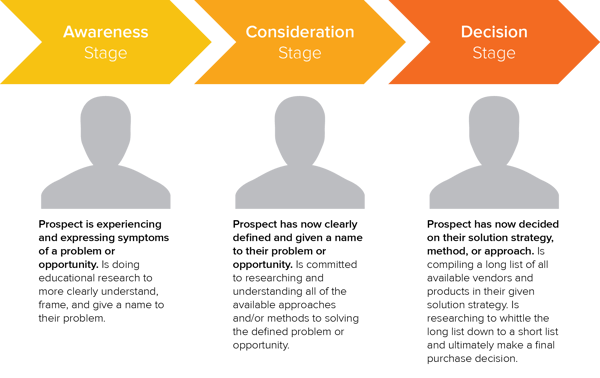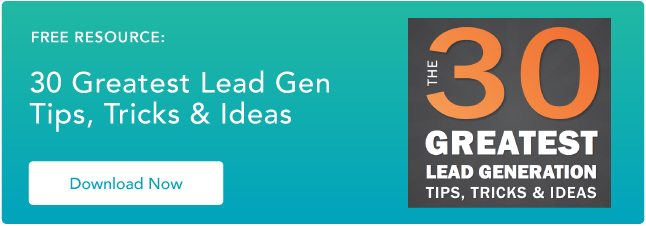- Like
- SHARE
- Digg
- Del
- Tumblr
- VKontakte
- Flattr
- Buffer
- Love This
- Save
- Odnoklassniki
- Meneame
- Blogger
- Amazon
- Yahoo Mail
- Gmail
- AOL
- Newsvine
- HackerNews
- Evernote
- MySpace
- Mail.ru
- Viadeo
- Line
- Comments
- Yummly
- SMS
- Viber
- Telegram
- JOIN
- Skype
- Facebook Messenger
- Kakao
- LiveJournal
- Yammer
- Edgar
- Fintel
- Mix
- Instapaper
- Copy Link
As William Shakespeare once wrote, “To be or not to be, that is the question.”
Marketers have a similar classic debate and that is: gated versus ungated content.
While 80% of B2B content marketing assets are gated and lead generation is one of the top objectives for marketers, it’s not an open and shut case.
That’s why we’ve gathered everything you need to know about gated content in this post.
Below, let’s review what gated content is and how it compares to ungated content. Then, we’ll dive into gated content best practices and look at some examples.
What is Gated Content?
Gated content is any type of content that viewers can only access after exchanging their information. Essentially, the content is hidden behind a form. Companies use gated content to generate leads and ultimately, sales.
So, how does gated content work?
Usually, users arrive at your website and see a CTA or pop-up that offers them access to a piece of content in exchange for their information.
Your CTA or pop-up could lead to a landing page where the visitor will get more information on the content offer.
It’s important to note that gated content for inbound marketing is free and not hidden behind a paywall. Users just need to submit contact information to access the content.
Now, you might be wondering, “Why would I hide my content from my audience?”
Typically, the goal of gated content is lead generation. Marketers will create targeted content for their audience and use it to attract leads. Gated content isn’t used for brand awareness or visibility campaigns because the nature of hidden content doesn’t allow for high traffic.
Below, let’s discuss the pros and cons of gated versus ungated content.
Gated vs. Ungated Content
While gated content is a strategy for lead generation, ungated content is meant to improve SEO and increase brand awareness. Ungated content could be blog posts, infographics, or YouTube videos. On the other hand, gated content could be white papers, ebooks, or webinars.
As you can probably tell, gated and ungated content both serve different purposes. But you might be wondering what the pros and cons are. Let’s dive into it now.
Pros of Gated Content
- Increases lead generation
- Leads to more sales
- Provides analytics and insight into your customers
- Allows for email list segmentation
Cons of Gated Content
- Lack of page views and traffic
- No SEO benefit or boost
- The form deters people from downloading content
- No brand visibility
Ultimately, gated content is meant to generate leads that you can nurture into prospects through your marketing efforts while ungated content is meant to increase traffic and improve trust with your audience.
Both types of content are valuable and should be included in your content marketing strategy.
After reading this list, you might be wondering, “How do I know if I should gate my content?”
Well, it all depends on your goals — brand visibility/SEO or lead generation.
Additionally, consider the type of content. Longer form content like an ebook is suited to gated content, while shorter form content such as blog posts are better off as ungated content.
Once you’ve decided to create a piece of gated content, you’re probably curious how to get started. Let’s review some best practices below.
Best Practices of Gated Content
- Create content for each stage in the buyer’s journey.
- Complete a competitive analysis.
- Provide incentive.
- Build a strong landing page.
- Segment your audience.
- Measure the analytics.
1. Create content for each stage in the buyer’s journey.
When a prospect goes through the buyer’s journey, they’ll go through three stages: awareness, consideration, and decision.
In fact, here’s a quick graphic explaining each stage:
 During each stage, it’s important that your audience has content that’s meant to help them along the way.
During each stage, it’s important that your audience has content that’s meant to help them along the way.
For instance, visitors in the awareness stage are probably interested in reading an ebook. On the other hand, a visitor in the decision stage might prefer a product demo or webinar.
That’s why it’s important that your content offers are designed for each stage of the buyer’s journey. If your gated content is aligned with their journey, your audience is more likely to convert.
2. Complete a competitive analysis.
Once you’ve brainstormed some content ideas for each stage of the buyer’s journey, it’s time to conduct a competitive analysis.
In a competitive analysis, you’ll research what your competitors are doing. This means looking up what type of content offers they’re creating. Look at what content is gated versus ungated.
This will give you a good idea of what content of yours should be gated.
3. Provide incentive.
As an inbound marketer, you know that providing value is of the utmost importance.
Your content offers shouldn’t just be a long blog post. Instead, your gated content should provide actionable, valuable content.
Additionally, your gated content should be relevant to your audience.
When your content provides true value, it gives your audience an incentive to fill out that form and give you their contact information.
4. Build a strong landing page.
Usually, when a user clicks on a CTA for a content offer, they’ll be led to a landing page. That means one of the best practices for gated content is to build a strong landing page.
This means you’ll want to create a strong headline, write compelling copy, and generate a form.
Ultimately, a landing page will eliminate distractions and capture your visitor’s undivided attention.
5. Segment your audience.
Once your audience has downloaded your gated content and you receive their email address, it’s time to segment your email lists.
This will help you develop email marketing campaigns that are targeted and effective.
Additionally, segmenting your audience means you can send nurturing emails to move those leads to prospects.
6. Measure the analytics.
When you’ve decided to gate a certain piece of content, that means you can track conversions and measure your analytics.
As with any marketing strategy, measuring your success is extremely important. This data will help you understand your audience better and improve your content strategy.
Now that you know some best practices for creating gated content, let’s look at types of content and examples of what this will look like in action.
Gated Content Examples
1. White paper.
A great example of gated content is a white paper. A white paper is an authoritative, in-depth report on a specific topic.
Usually, these are long-form pieces of content that are interesting and valuable to your audience.
White papers make great gated content because of the value they provide. Additionally, it helps your brand become an industry expert on a topic. When you’re a trusted expert, people want to know what you have to say.
This means you’ll get more people to download your offer.
2. Ebook.
An ebook is another popular type of gated content. Unlike a white paper, an ebook is usually a shorter guide on a specific topic.
Ebooks can also give your brand authority and build trust with your audience. Usually, ebooks are used in the awareness and consideration stage of the buyer’s journey.
3. Templates.
One of my favorite forms of gated content is the template. Providing a template is a tactical, actionable piece of content.
The perceived value of a template is much higher than that of an ebook and a white paper, which means your audience is more likely to input their contact information to receive it.
Templates are a great gated content offer for folks in the consideration and decision stage of the buyer’s journey.
4. Webinar.
With a webinar, you’ll educate your audience to learn more about a topic. You’ll develop trust, build relationships, and hopefully, inspire.
For prospects who are in the decision stage of the buyer’s journey, webinars are an excellent gated content offer.
Again, webinars have a high perceived value, which makes your audience more likely to fill out that form.
With gated content, it’s important to consider what types of content you’re offering and make sure it’s suited to your audience. Ultimately, gated content should be targeted and help you generate leads.
Originally published Jul 1, 2020 6:30:00 PM, updated July 02 2020




![how-to-develop-a-successful-marketing-mix-strategy-[+-templates]](https://everythingflex.com/wp-content/uploads/2020/07/6452/how-to-develop-a-successful-marketing-mix-strategy-templates-150x150.jpg-23keepprotocol)